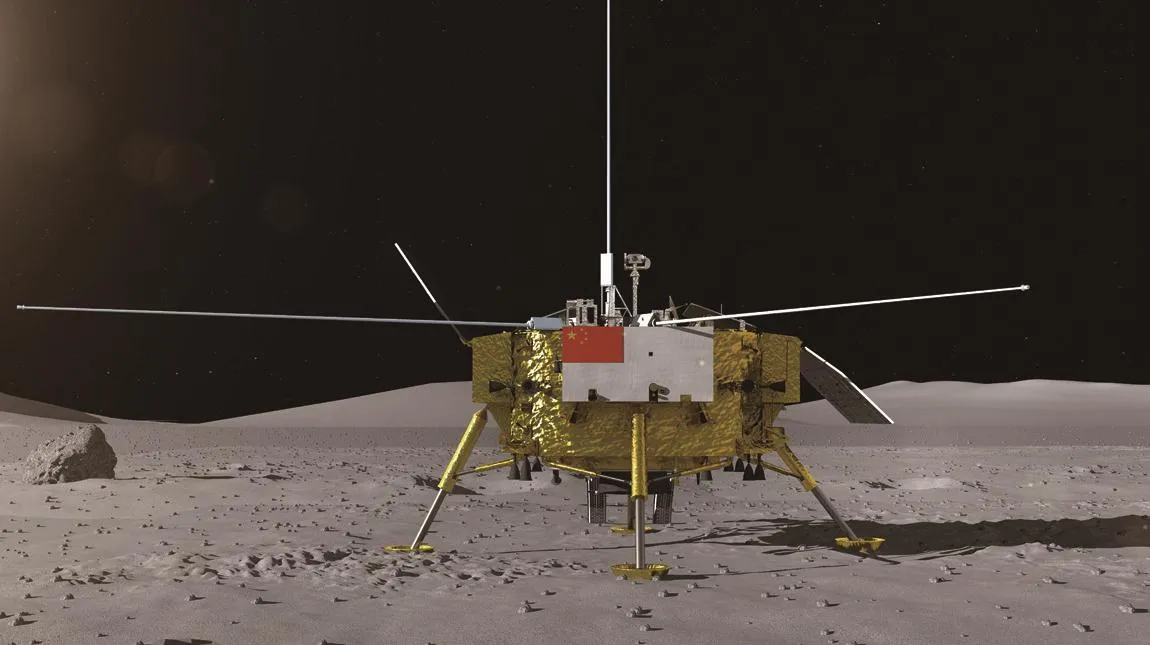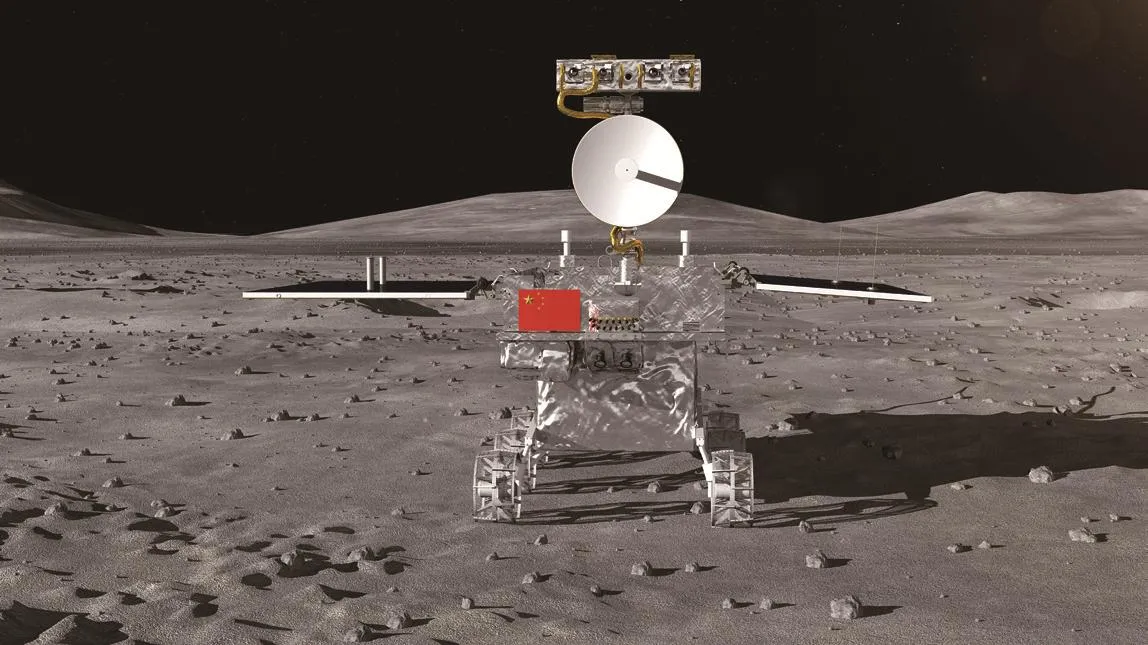Con figuration of the Chang’e 4 Lander and Rover Released
2018-02-21DAIZhenying
The Chang’e 4 lunar probe is planned to be launched this December from the Xichang Satellite Launch Center. It will be the first ever attempt of a soft landing and roving on the far side of the moon. The configuration of the Chang’e 4 lander and rover was unveiled at a ceremony for a naming contest of the rover held on August 15 in Beijing. The of ficial name will be announced in October.
Up to now, China has completed missions including Chang’e 1, Chang’e 2, Chang’e 3 and Chang’e 5 Flight Test Vehicle, also called the Reentry Return Flight Test Mission. The Chang’e 3 lander Yutu exceeded its mission targets, arriving at the lunar surface on December 15, 2013 and “retiring” on July 16, 2016, far exceeding its 3-month service time.

Artist’s concept of Chang’e 4 lunar landerPhoto: China Lunar Exploration and Space Engineering Center of CNSA
“The Chang’e 4 rover is similar to the technical state of Yutu, with changes and payload con figuration adaption for complex terrain conditions on the far side of the moon, and requirements for relay communications and scientific targets.” Vice commander of China’s Lunar Exploration Program and Director of Lunar Exploration and Space Program Center under China National Space Administration LIU Jizhong said.
He said that landing at the far side or near side of the moon is seemingly no essential difference. In fact, achieving lunar far side soft landing, roving and surveys is a leap in capability and an innovation both in terms of engineering technology and space technology.
First, due to the blocking of the moon, the lunar far side becomes a restricted area for Earth communications and telemetry. China launched a relay satellite Queqiao on May 21 from the Xichang Satellite Launch Center, which is operating at the Earth-moon Lagrange Point 2, 65000 km from the moon and will provide Earth-moon relay telemetry and data transmission services for Chang’e 4 probe on the far side of the moon.
Second, the lunar near side shields the radio frequency interference from the Earth which gives a clean electromagnetic environment on the far side, supplying an ideal place for lowfrequency radio astronomy observation and research.
Third, geological characteristic survey making full use of the unique conditions of the oldest crust rocks on the far side of the moon is expected to establish a comprehensive geologic pro file and evolution model combined with topography, geomorphology, shallow structure and material composition thus obtaining new knowledge of the early evolutionary history of the moon.
During the past 60 years, mankind has launched more than 100 lunar probes, including 65 lunar landers. Only unmanned lunar orbiters and the manned Apollo team had seen the far side of the moon and none of the lunar probes has ever landed on the lunar far side. All the information on the lunar far side has been obtained by remote sensing observation and pictures taken. China will launch Chang’e 4 lunar lander/rover combination in December 2018 to make the first lunar far side soft landing and roving. (DAI Zhenying/China Space News)

Artist’s concept of Chang’e 4 lunar roverPhoto: China Lunar Exploration and Space Engineering Center of CNSA
